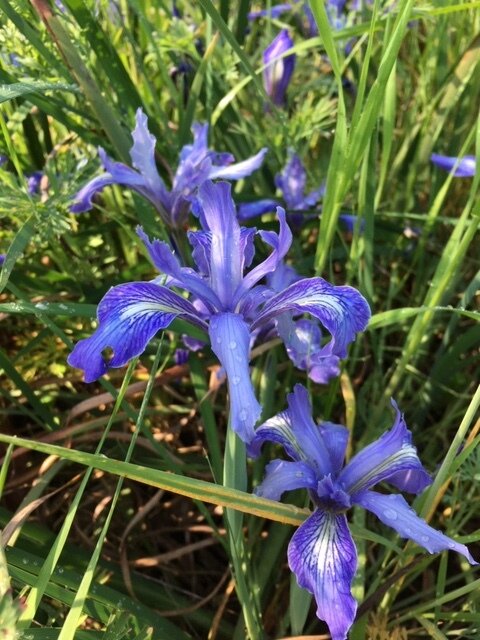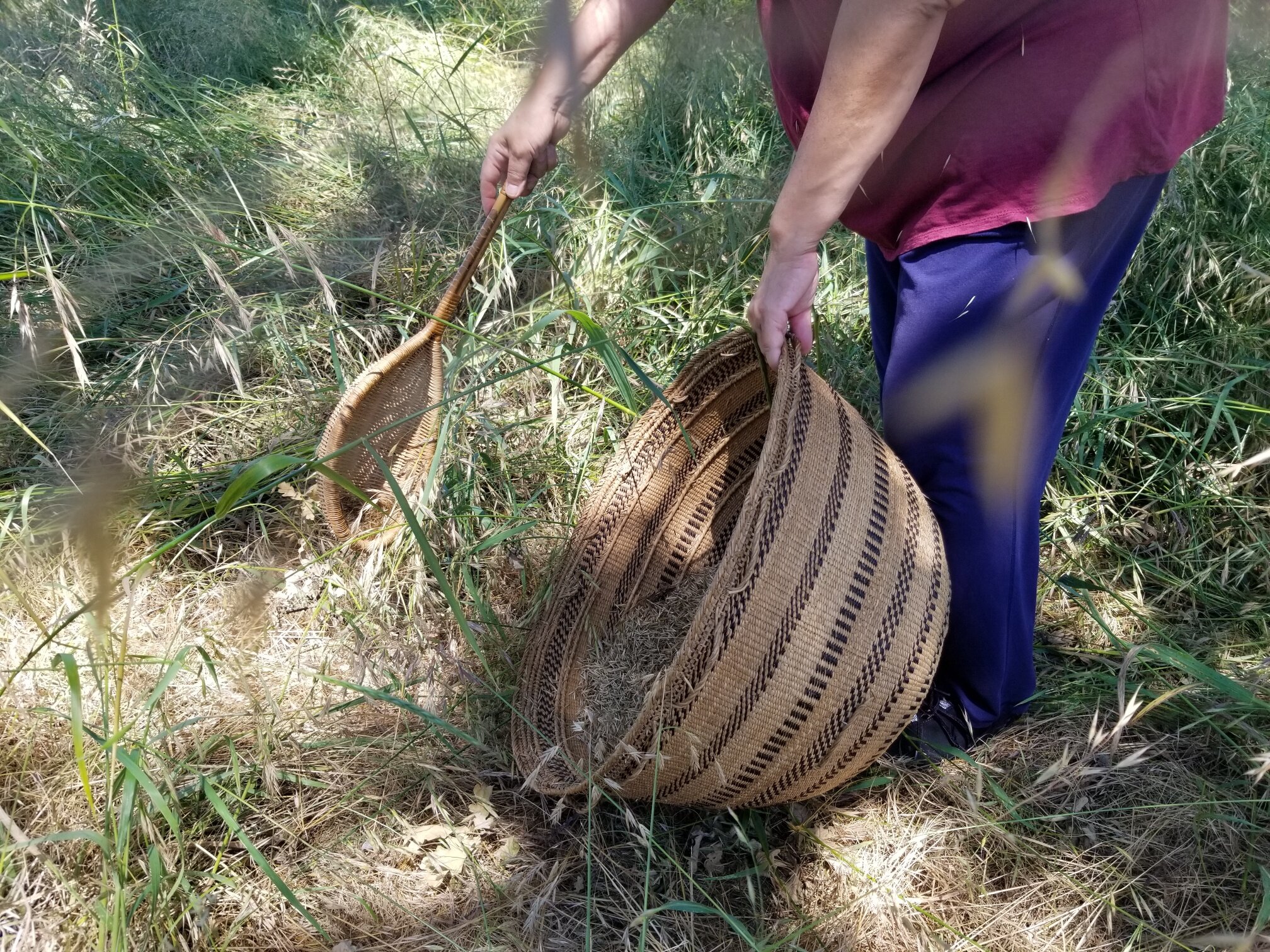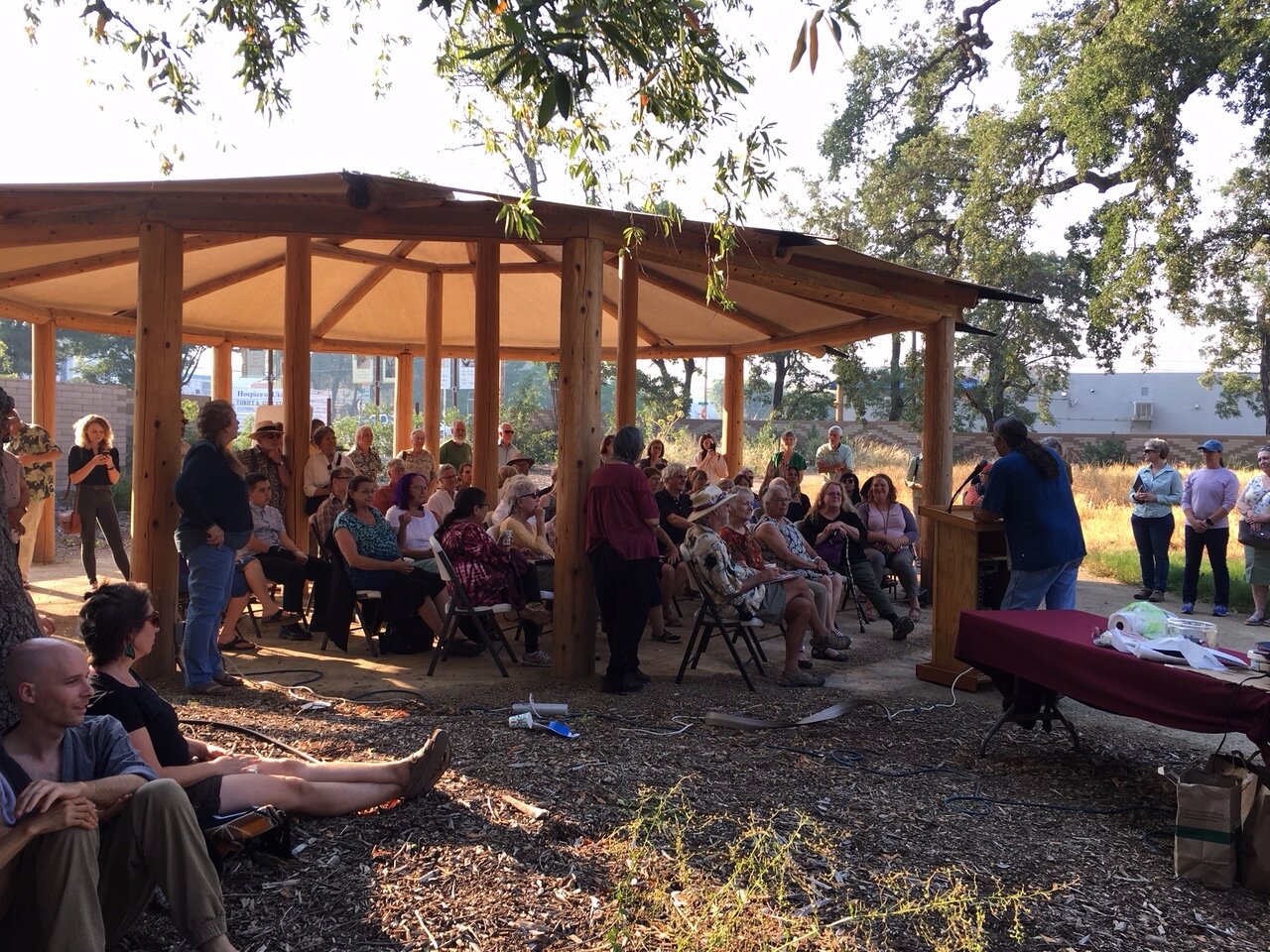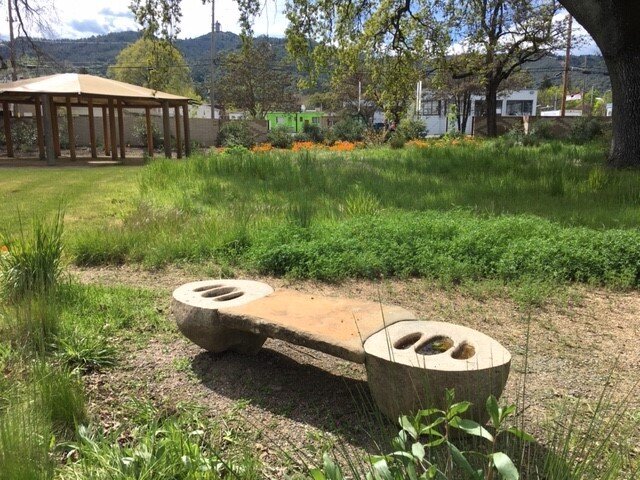wildflowers, native grasses, nature education,
walking tours, pomo culture
The Wild Gardens is an outdoor educational environment focusing on native Northern California plants and habitats. Here opportunities are provided for the public to learn about regional ecosystems, environmental sustainability, and the cultural traditions and land management practices of the Pomo Indians, the original inhabitants of the greater Ukiah Valley.
Though it opened to the public in October 2017, the Wild Gardens is a continuing work-in-progress. Starting a garden devoted to native species of plants requires considerable time, attention, and care to ensure that those plants take solid root and are not out-competed by invasive species. That means an awful lot of weeding year-round and, in some cases, replantings of species that struggle.
In 2018, we installed a large Pomo fish trap sculpture next to a water feature that replicates a salmon stream. The sculpture is made of steel and was created by Bruce Smith, a Pomo metalworker and artist. The design was based on an actual fish trap basket in the Museum’s collections. And in 2019, we added two privately-commissioned artisanal benches that provide visitors a chance to sit, relax, and contemplate what they see and learn in the gardens. One is made of old-growth sinker redwood and was designed and fabricated by Mendocino wood artist Kerry Marshall. The other, called pod bench, is a one-of-a-kind creation by Anderson Valley stone artist Rebecca Johnson.
Looking ahead, our next big project is to create and install interpretive signs at strategic places in the gardens. The signs will help visitors understand the importance of specific plants both in local ecosystems and to Pomo cultural practices. Signs will be devoted to salmon (and catching salmon), oak woodlands, acorns and the traditional process of making them edible, native grasses and the seeds that are harvested from them, chaparral bio-communities, controlled burns and how they were utilized by Pomo peoples in their land stewardship practices, and the plants and techniques used in Pomo basket weaving. We aim to have the signs in place by the end of 2023.
The Outdoor Classroom offers open-air seating for hands-on learning; a place where children and adults alike can experience transforming native plants from the Wild Gardens into delicious foods, as well as into objects of beauty and use.
The Brush Arbor is an outdoor community gathering space inspired by traditional Pomo Indian architecture and crafted from sustainably harvested log poles. This spectacular structure can host celebrations, storytelling, music making, and other cultural presentations.
Creation of the Wild Gardens was made possible by funds from the following of State of California grant programs: Proposition 84 Nature Education Facilities Grant Program, the California Cultural & Historical Endowment Museum Grant Program; the Habitat Conservation Fund Grant Program. Additional financial support was provided by the City of Ukiah.
The Wild Gardens continues to evolve thanks to generous support from the Community Foundation of Mendocino County, The Christensen Fund, The George & Ruth Bradford Foundation, the Museum’s Engraved Paver Program, The Sun House Guild, Grace Hudson Museum Members, private donations, and the City of Ukiah.
We are delighted and proud that the Grace Hudson Museum's Wild Gardens have been included in an online feature from the National Trust for Historic Preservation. The article, posted on March 28, 2023, focuses on spring gardens at historic homes of historic artists. Click the image below to read about nine different gardens associated with institutional members of the Historic Artists Homes and Studios program (HAHS). Of course, the Wild Gardens didn't exist at the time Grace Hudson resided and worked in the Sun House. However, they take inspiration from the ecosystems prevalent in and around the Ukiah Valley during her era, and from many of the landscapes that appear in Grace's paintings.




























